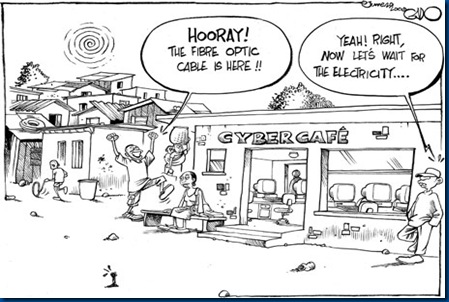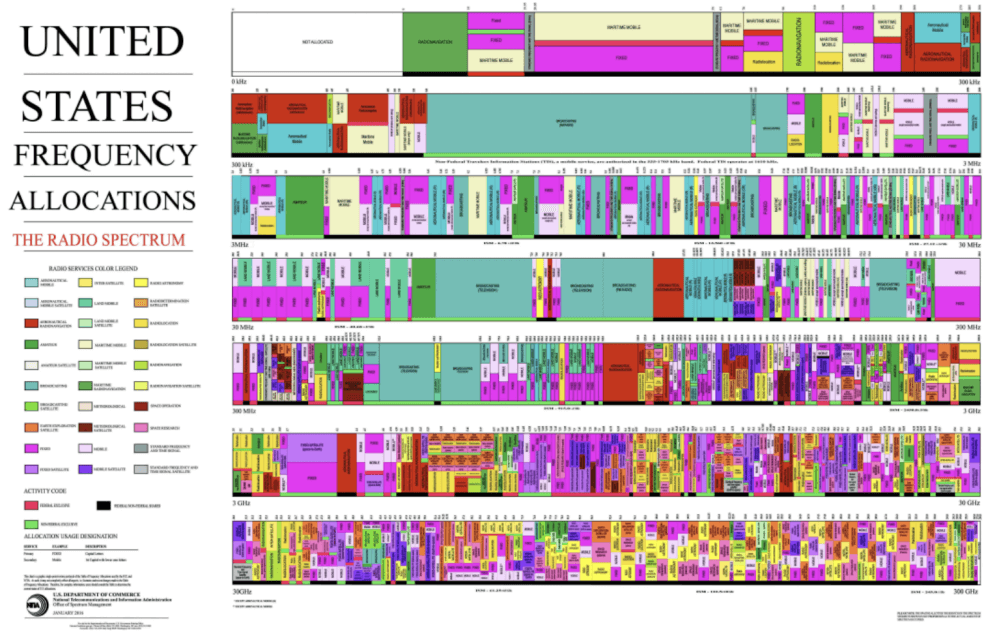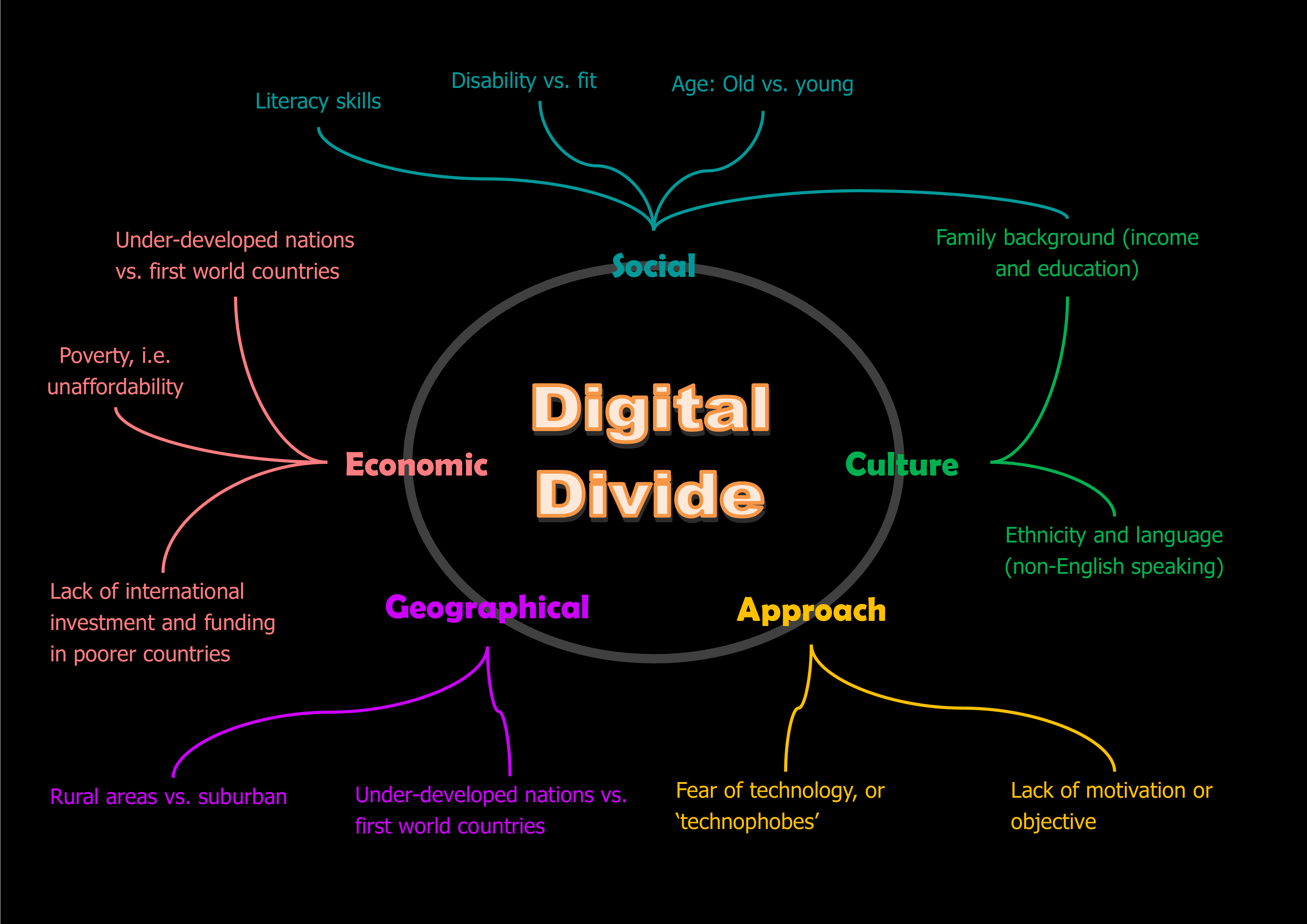Introduction

In this assignment, you'll explore the hidden backbone of information technologies, how those technologies tend to be for the privileged classes around the world, and how people use those technologies to enact change in their countries.
Your Contribution
- Collaborate in the current Google Slides template (available via Canvas) to summarizes your chosen topic and readings.
- Then ask each other questions and suggest revisions by using the Slides Commenting feature. Be sure to @name to alert your classmates of your comments.
- Download/Print a PDF of your slide and the Bibliography slide that includes your entries.
- Submit the PDF in Canvas for a plagiarism check and score.
Infrastructure

Infrastructure, as it pertains to information technology and computer science, has to do with electricity, physical wires, airwaves, space technologies, and communications networks which are the bones of a system that allows us to talk to each other over great distances and produce all manner of products and virtual services. Explore this key concept by reading one or more of the following:
Reading List
- Federal Communications Commission (FCC).
- Federal Trade Commission (FTC).
- Radio frequency spectrum map (PDF 2016).
- It’s Time to Tie the U.S. Electric Grid Together, Says NREL Study.
- Wireless Fidelity (WiFi) network. View the two graphs at full screen for more detail.
- Submarine/Underwater internet cable map.
- The Man Determined to Map the Entire Internet (fiber optic cables).
-
2G / 3G / 4G / 5G coverage map, United States.
Does this neighborhood in Portland get decent coverage? - Why Mesh Networks are the Right Choice for the Internet of Things ~ 2:26
- Landline Phones Disappearing in These 20 States.
- Spacex Starlink internet coverage, cost, speeds and satellites — what you need to know.
- ESRI Satellite Map.
- Satellite descriptions and ephemeris are sourced from the Joint Functional Component Command for Space's Space-Tracker data.
- James Yoder's Stuff in Space site allows searching.
Digital Divide
The luxuries of a well-formed infrastructure allow many of us to enjoy the benefits of varied communications services, but what about remote, war-torn, or famine-stricken areas of the globe? Where are these 'digital divides' and what causes them? Do any countries provide the infrastructure as part of their social services, or do citizens pay a private company? Have those private companies taken advantage of the lower classes thereby reducing their access to parts of the infrastructure resulting in their inability to improve their financial situation? Explore this key concept by reading one or more of the following:

Reading List
- What Is the Digital Divide? (2022, with charts)
- High-speed Internet by county in the USA (2017).
- Here is what's holding back Africa's digital revolution.
- The Value of Being Ordinary: Access to Energy is not like Youth Sports or GRE Scores. (USA 2020)
- 2020 State of Computer Science Education: Illuminating Disparities (USA)
- Rural versus urban (USA)
- Ethnic groups (USA)
- Smart vs dumb phone
- Age (USA, 2020)
- The disabled (USA)
Digital Justice
When the masses are disgruntled with their government's response to poor infrastructure, they may revolt! Some people will take on the role of activist to take the people's message to their government. Activists play a key role in communicating the message physically (in person) as well as virtually. How have activists used social media or protesting applications to further their cause and enact justice? Explore this key concept by reading one or more of the following:
Reading List
- Digital Justice: How the Pandemic Transformed US Courts (2022)
- Ethical aspects of digital health from a justice point of view (2019)
- 4 views on how to ensure social justice in a digital world (2021 Response to "World Day of Social Justice 2021".)
- Online Defamation Law (USA)
- More than just Tok: Gen Z’s activism on TikTok is outperforming the performative. (2020)
- The science of contemporary street protest: New efforts in the United States (2019)
- Technology can still live up to its promise as a force for justice (2020)
- Why Citizen has become the unofficial social network for protests (2020)
- How do I prepare my phone for a protest? (2020)
- American Civil Liberties Union's (ACLU) Mobile Justice App . (2018) If you choose to install the app on your phone and test it, write about which platform you installed it on and how well it works. Include your findings to earn 1 point of extra credit. Captioned.
- How tech workers became activists, leading a resistance movement that is shaking up Silicon Valley. (2019)
- The Impact of Social Media on Social Unrest in the Arab Spring. (2012)
- Hollaback! (2016)
Net Neutrality
One component of our infrastructure is the internet, which was originally slated as a free and open resource for all humans. Has this original intent stayed intact? Does everyone have equal access and speed at an acceptable price? Or do others have better access and speed for a premium price? Explore this key concept by reading one or more of the following:
Reading List
- Net neutrality will make a comeback in 2022 (2022)
- Restoring Internet Freedom (2021) Bridging the Digital Divide for Low-Income Consumers; Lifeline and Link Up Reform and Modernization
- Net Neutrality 2021 Legislation at the State Level (USA)
- 15 Facts about Net Neutrality.
- The WIRED Guide to Net Neutrality 2020